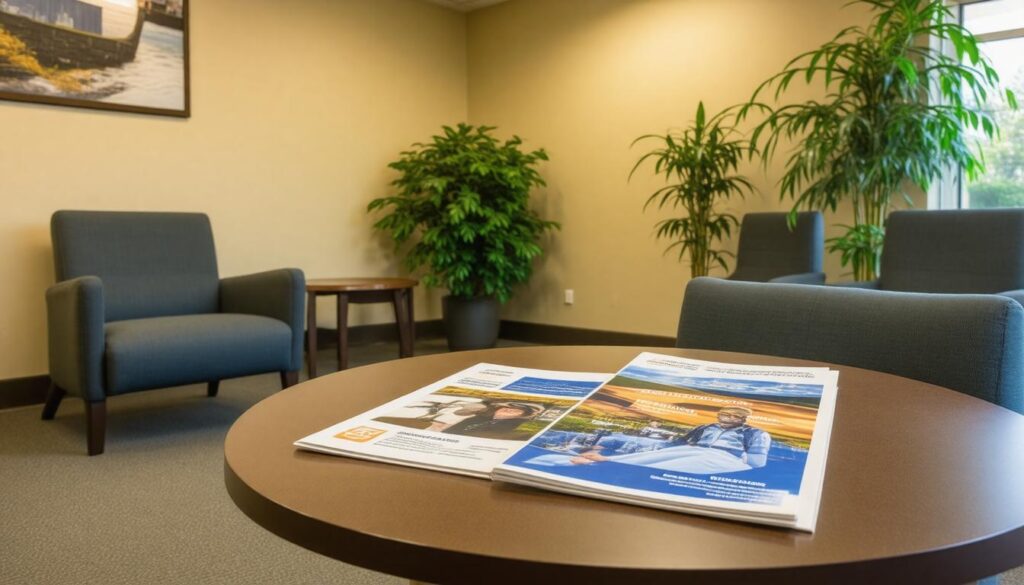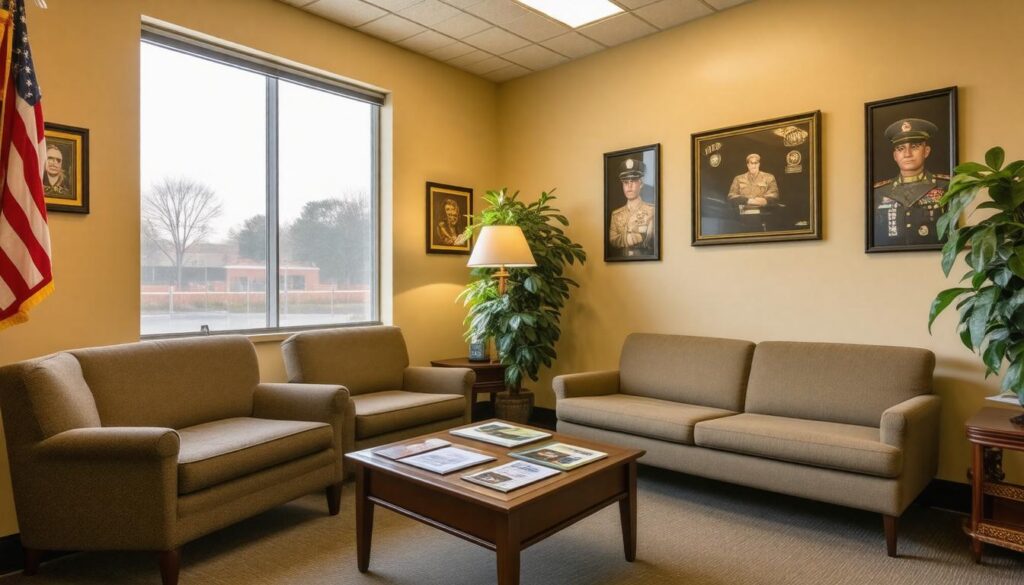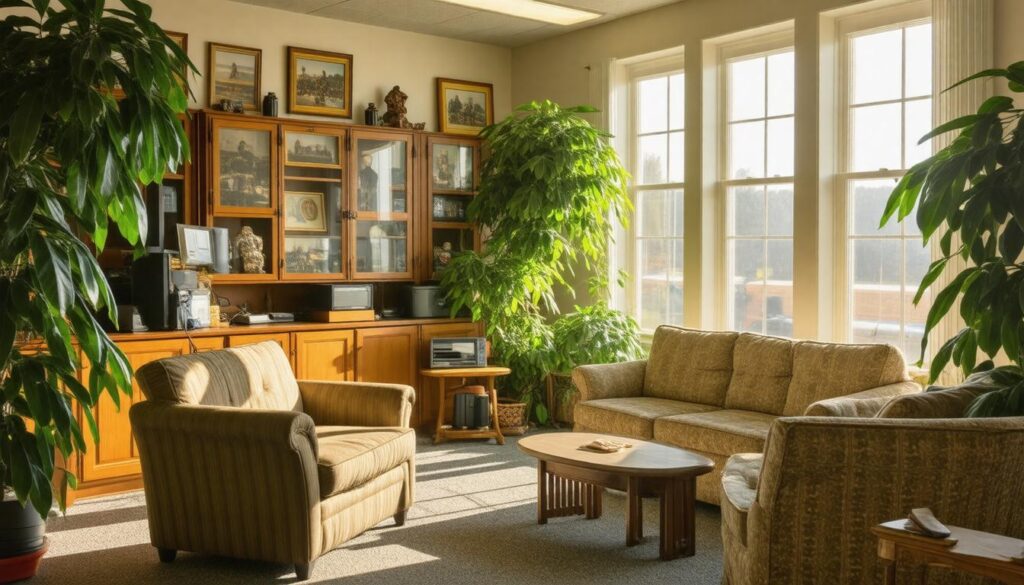Navigating the maze of benefits and resources available to senior veterans can feel like a daunting task. Many have bravely served our country, yet as they transition into their golden years, they might not know where to turn for help. Thankfully, various programs exist to provide essential support. From healthcare services tailored specifically for aging veterans to financial aid designed to ease daily burdens, these resources aim to honor their sacrifices and improve their quality of life. This article explores the multitude of assistance opportunities available to senior veterans, empowering them—and their families—to make informed decisions about their care and support options.
The Senior Care Foundation offers a variety of assistance programs for senior veterans, including support for transitioning to civilian life, healthcare services, housing assistance, and access to military family help. These resources aim to ensure that eligible veterans receive the comprehensive care and support they need in their later years.

Veterans assistance programs are not just a set of services; they serve as a lifeline for countless veterans seeking support after military life. These programs encompass a wide array of areas, including healthcare, financial aid, housing solutions, and even educational opportunities. Each initiative aims to ensure that veterans receive the care and resources they need to lead fulfilling lives, adjusting smoothly to civilian society after the sacrifices they made for our country.
At the forefront of these services is the Veterans Health Administration (VHA), which provides comprehensive medical care for veterans, ensuring they access necessary treatments for both physical and mental health challenges. This includes everything from routine check-ups to advanced surgeries and long-term therapies.
Next in line is the Veterans Benefits Administration (VBA), which focuses on financial support through various benefits such as disability compensation, education benefits, and vocational rehabilitation programs. Through this support, veterans can not only survive but thrive financially in their post-service lives.
On a different note, let's not overlook the invaluable contributions of the National Cemetery Administration (NCA). This organization honors fallen heroes by ensuring dignified resting places in national cemeteries where their sacrifices are remembered and celebrated. It’s a powerful testament to how our society values the service and commitment of veterans.
Another significant component is the Aid and Attendance (A&A) pension, which offers additional financial assistance to those who require help with daily living activities. This enables many senior veterans to remain in their preferred living situations rather than being forced into costly care facilities.
Moreover, the Geriatrics and Extended Care (GEC) services provide specialized support tailored to older veterans, focusing on their unique needs—from skilled nursing facilities to home-based care options.
It's crucial for veterans—and families of veterans—to familiarize themselves with these available benefits and services. Many resources exist to guide individuals through the application process and make transitions into civilian life smoother and more manageable. For instance, local veteran service organizations (VSOs) can provide invaluable assistance in navigating these options effectively.
As you explore these vital programs designed for those who have served our nation, it’s important to understand how eligibility could shape access to these benefits and resources moving forward.
Not all veterans qualify for every assistance program available, and there are several specific requirements that must be met. First and foremost, a veteran's discharge status plays a critical role in determining eligibility—only those with an honorable or general discharge can access most benefits. This ensures that the individuals receiving assistance have served in a capacity that is recognized and respected by the military community.
These criteria create a framework that identifies who is eligible for specific services while ensuring that resources are directed towards those who need them most. For instance, to qualify for Aid and Attendance—a benefit that provides added financial support for qualifying veterans who need assistance with daily activities—there are additional requirements such as age (must be over 65) or having a permanent disability.
Some advocates contend that these eligibility criteria can sometimes feel overly stringent compared to non-veteran senior programs. It's an ongoing conversation in our society, emphasizing the need for policy adjustments to better serve our veterans while not jeopardizing the integrity of assistance programs.
Navigating these standards can be daunting; however, understanding them is essential for seniors and their families searching for support options through federal and state programs. Knowing your rights and resources is key as you move forward toward exploring vital healthcare options designed specifically for those who served.

Quality healthcare is pivotal, yet navigating the system can be overwhelming for senior veterans. Fortunately, the Veterans Health Administration (VHA) offers a range of specialized services designed to meet these individuals' specific needs, ensuring they receive appropriate care without unnecessary complications.
These services not only support physical health but also cater to the emotional and mental well-being of senior veterans, acknowledging their sacrifices while easing their transition back into civilian life.
One key aspect of accessing healthcare through the VHA involves understanding its extensive offerings. From primary care visits that allow seniors to address general health concerns to specialized care in fields such as cardiology, these programs are tailored to fit specific needs.
In addition, long-term care options including home-based primary care and community living centers offer choices that align with what many veterans prefer: to remain in familiar surroundings while receiving necessary medical attention.
Take John, a 72-year-old Army veteran, who serves as a testament to the importance of utilizing these specialized services. He found significant relief through VHA’s geriatric services tailored just for him, effectively managing his chronic conditions and improving his quality of life.
It's worth noting that approximately 4.7 million veterans aged 65 and older are enrolled in VHA healthcare programs according to the Department of Veterans Affairs. This substantial number underscores the critical role that such services play in supporting our aging veteran population.
Seeking help is vital, and it's advisable for veterans to contact their local VA medical center for personalized healthcare plans that cater specifically to their individual medical requirements. Each veteran's journey through the system can be unique; therefore understanding where to go for assistance and advocating for oneself can simplify this process.
Additionally, families should encourage open communication between their loved ones and healthcare providers. This helps ensure accurate information exchange and that all necessary support systems are in place. Exploring all available resources is paramount when it comes to navigating healthcare for senior veterans effectively.
With the availability of comprehensive healthcare services through the VHA, transitioning into supportive living arrangements is an important next step in ensuring a dignified and comfortable life for veterans as they age.

Finding appropriate housing can be particularly challenging for elderly veterans, especially when physical limitations or financial constraints come into play. Thankfully, there are several specialized programs available to assist them in securing a safe and supportive living space tailored to their unique needs.
One of the key resources available to disabled veterans is the Specially Adapted Housing (SAH) Grant. This program provides financial assistance to modify existing homes or build new ones to accommodate disabilities stemming from military service.
For example, if a veteran requires a wheelchair, factors like wheelchair ramps, widened doorways, and bathroom modifications become critical for comfortable daily living. These adaptations remove barriers that could otherwise impede mobility and independence in their own homes.
Just imagine the relief for a veteran who can now enter their home after surgery due to a recent injury; having those ramps replacing stairs allows them much easier access. This adaptability not only enhances comfort but also empowers veterans to maintain a sense of normalcy in their daily lives.
Another significant resource is the Veterans Affairs Supportive Housing (VASH) program. This initiative combines housing vouchers from HUD (the Department of Housing and Urban Development) with VA case management services aimed at addressing the challenges faced by homeless veterans seeking stable long-term housing. The goal here is clear: officers provide both financial support through vouchers and essential services to help transitions from homelessness into permanent housing solutions.
As of 2023, more than 100,000 housing vouchers have been awarded to veterans through the VASH program, showing substantial progress in supporting those who have served our country. Each voucher typically covers a large portion of rent, thus alleviating financial burdens and allowing veterans to focus on rebuilding their lives—whether that means securing employment, accessing healthcare, or simply enjoying a stable home environment.
By leveraging these programs, elderly veterans can find not just shelter, but a place they can truly call home. With these resources offering peace of mind and stability during challenging phases of life, it's essential to explore additional financial resources that can further assist in securing a solid foundation for their future.
Financial stability is not just a luxury; for many veterans, it’s a necessary foundation upon which they build their post-service lives. While some veterans manage well after retirement, others struggle to navigate the complexities of financial support available to them. This is where understanding VA pensions can become an invaluable asset.
The VA pension program caters specifically to wartime veterans who meet essential criteria regarding age, disability, and income. This isn't merely a small handout but a robust financial lifeline tailored to help veterans maintain independence while meeting their daily needs. Each veteran's circumstances can vastly differ, making it vital to evaluate the type of benefits one qualifies for.
When it comes to specific benefits under the VA pension program, here’s a breakdown of the key offerings:
| Benefit Type | Description | Monthly Amount Example (2025 Rates) |
|---|---|---|
| Basic Pension | For low-income veterans | Up to $1,229 (single) |
| Aid and Attendance | Extra benefit for those needing help with daily activities | Additional $784 (single) |
| Housebound Benefit | Additional benefit for those confined to home | Additional $509 (single) |
As outlined in the table above, these pension categories are designed to fill gaps in assistance for different situations that veterans may face. If you find yourself requiring additional help—perhaps with daily tasks like cooking or personal care—then Aid and Attendance can offer substantial support. Conversely, if mobility is an issue and you’re largely housebound, the Housebound Benefit adds further financial relief.
Furthermore, it's crucial to think beyond just relying on VA pensions. Veterans should consider utilizing Social Security payments alongside their VA benefits. Combining these resources can substantially enhance a veteran’s overall financial security, ensuring that they can comfortably cover living expenses and maintain their quality of life during retirement.
By taking advantage of these benefits and weaving together various sources of support, veterans can build a more stable financial future as they transition into civilian life. This journey requires navigating additional processes that are essential for accessing all available resources effectively.
The application process for veteran benefits may feel daunting, but by breaking it down into manageable steps, you can make the experience smoother. Having a clear roadmap not only simplifies decisions but also reduces stress as you strive to secure the support you deserve.
Understanding that thorough documentation is key can empower you when preparing your application.
First things first: taking an inventory of your documents will put you in a strong position. Assemble several essential forms including your DD-214, which confirms your military service. Additionally, gathering medical records can be vital if you're applying for health-related benefits. It's also wise to bring along any income verification documents and additional service-related paperwork that might bolster your eligibility criteria. Organizing these materials beforehand can save time and mitigate potential frustrations later on.
With your documents organized, you’ll be ready to take the next important step.
Connecting with a Veteran Service Officer (VSO) can provide invaluable assistance throughout the application journey. Think of them as guides through the bureaucratic maze. VSOs are trained to navigate the complexities of these applications thoroughly. They will ensure that all necessary paperwork is completed accurately and that nothing is overlooked, helping you avoid common pitfalls that could delay your benefits. Many veterans have found peace of mind knowing they have someone knowledgeable advocating on their behalf.
Once you've contacted a VSO, it's time to put the paperwork into action.
Choose a submission method that works best for you—whether it’s online through the VA's portal at ebenefits.va.gov, via mail, or in person at a local VA office. Each option has its advantages; for instance, applying online provides immediate confirmation of submission, while submitting by mail allows for careful review of all documents before they are sent off. Regardless of how you apply, make copies of everything submitted for your records. Keeping track of your documents can prevent headaches in the future should anything require revisiting.
After submitting your application, vigilance becomes key.
Following up regularly on the status of your application is essential to ensure timely processing. You can easily check your status either through the VA's website or by contacting them directly—don't hesitate! Staying informed will help identify any issues early on and allow you to address them while keeping your application moving forward.
Taking this methodical approach not only decreases the likelihood of encountering issues like incomplete paperwork or delays but also maximizes your chances of promptly receiving benefits. For additional details and tools related to each step, I encourage you to visit our resources page at Senior Care Foundation.
Securing veteran benefits is an important step toward accessing the support available to you, ensuring that after years of service, you receive the care and assistance deserved. Through this structured process, veterans can confidently navigate their path toward obtaining valuable resources.